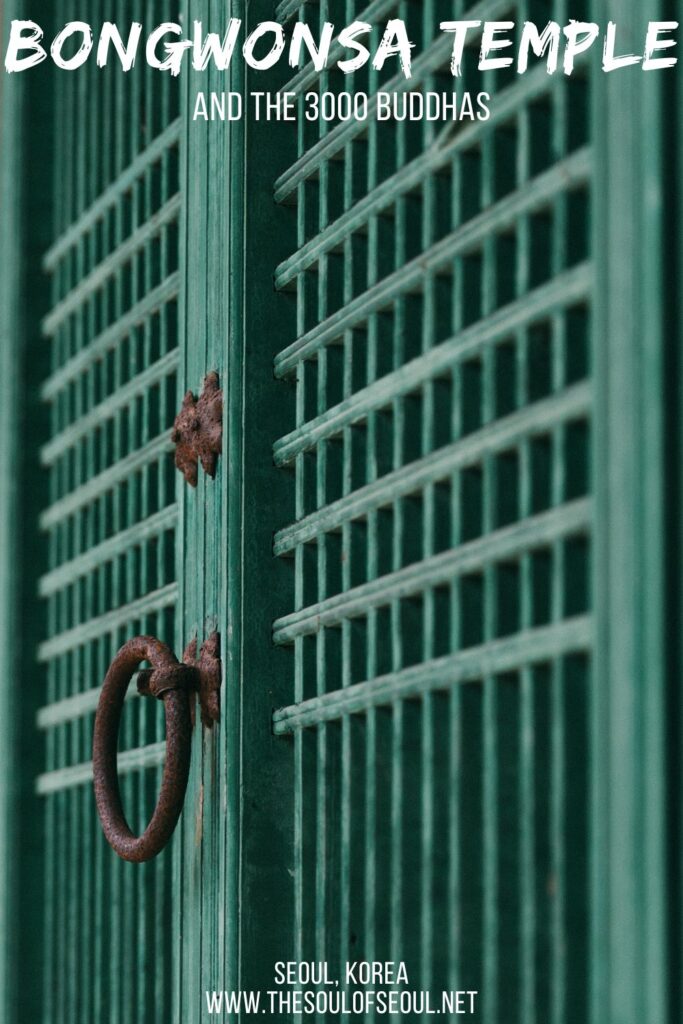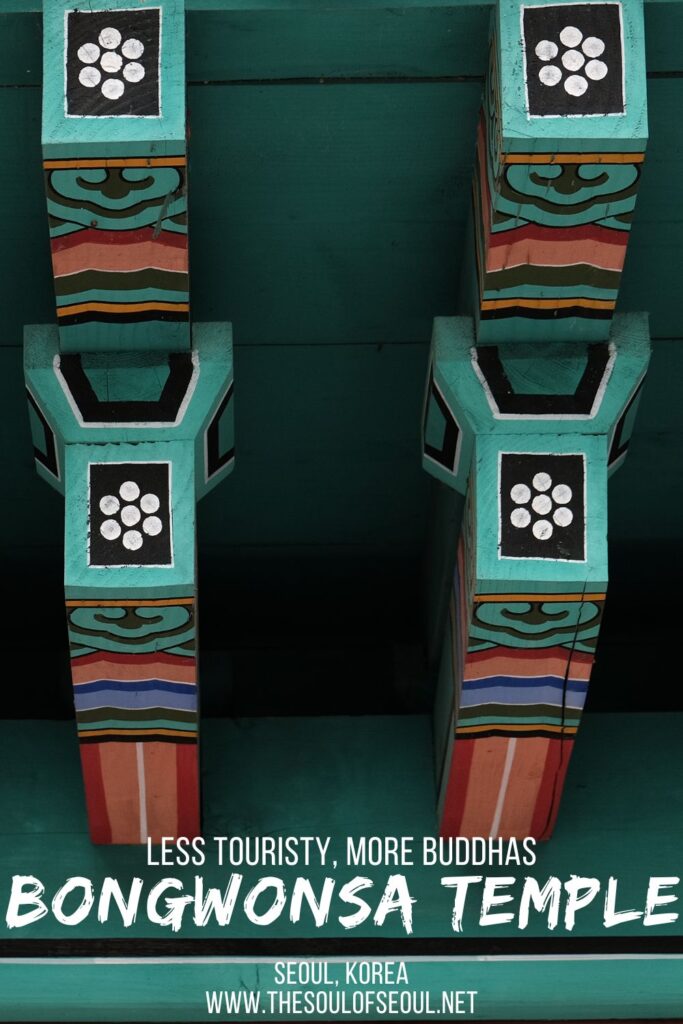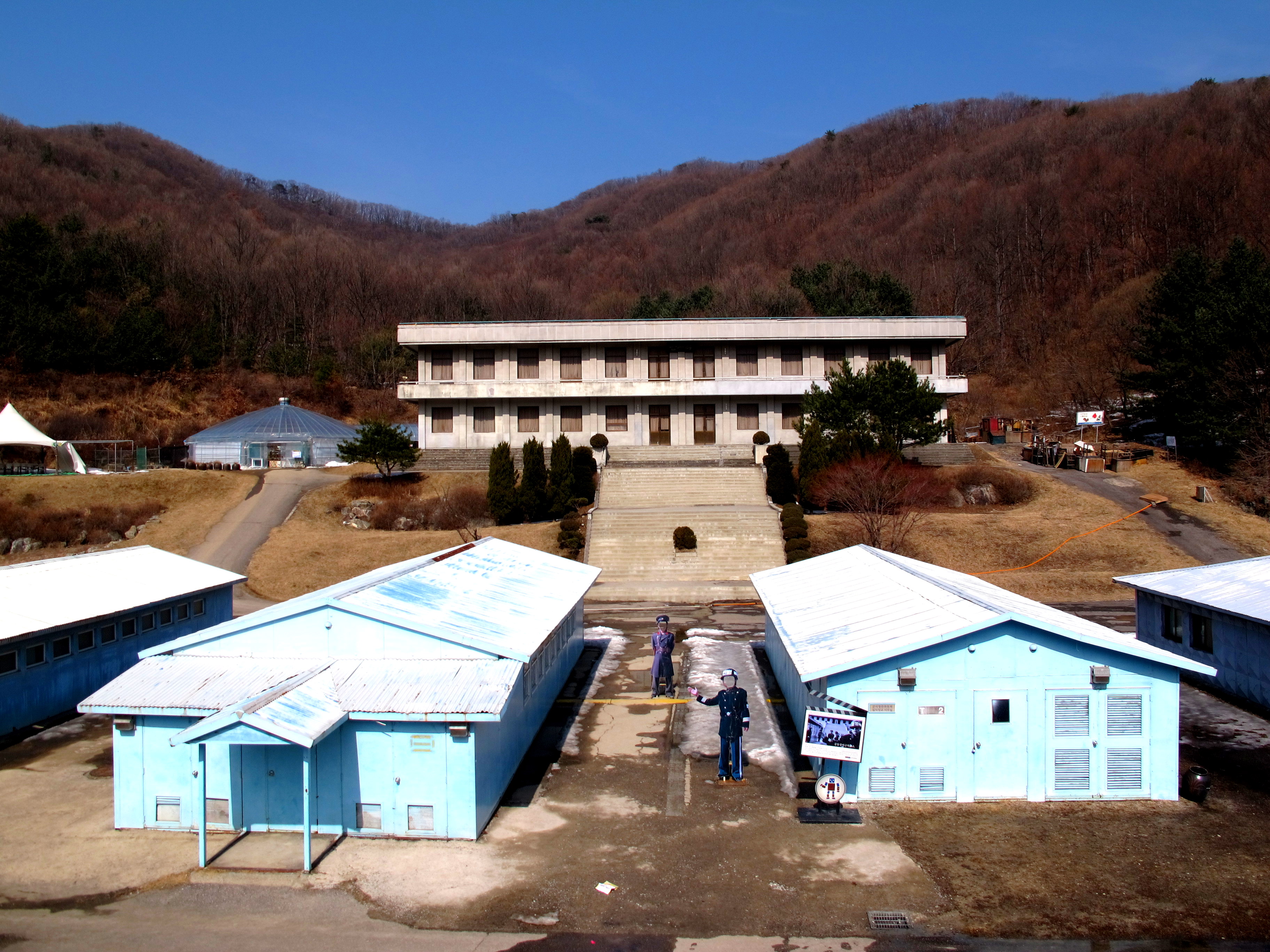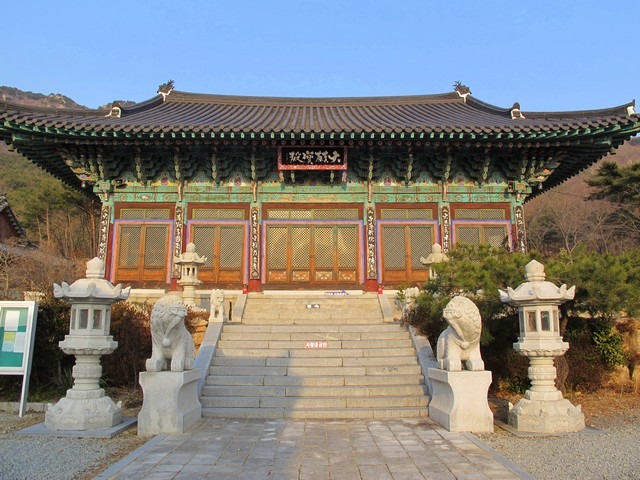Bongwonsa Temple In Seoul: Less Touristy, More Buddhas
Last Updated on April 4, 2024
When beginning to build an itinerary for Seoul, there are usually a few things that people want to make sure are included. A palace, a traditional market, and often a stop at a local Korean Buddhist Temple. The Buddhist temples here are beautiful and while most are located on the mountainsides outside of Seoul, there are a few in central Seoul that are easy to access.
Two temples have become the most popular on tourist itineraries, those being Jogyesa Temple and Bongeunsa Temple, but not too far away sits the beautiful Bongwonsa Temple. Generally quieter and without tourists, this Korean temple in Seoul
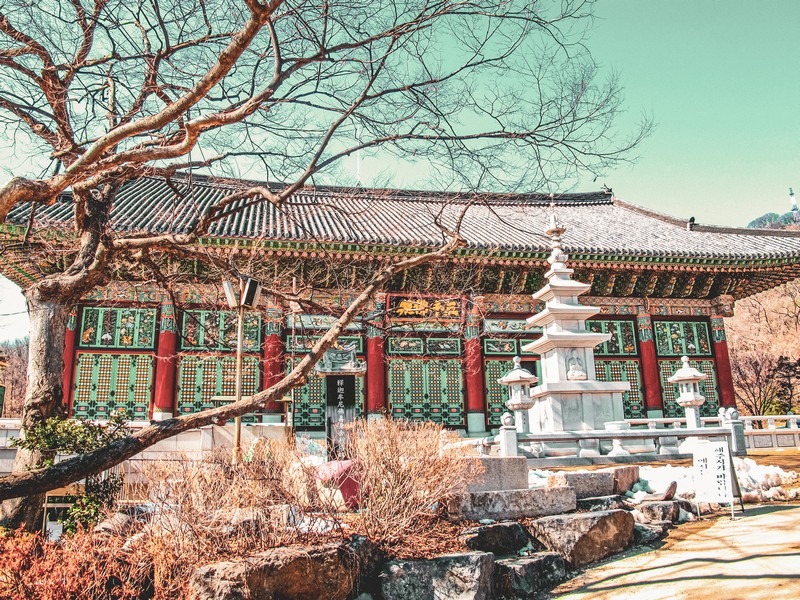
Visit this beautiful Buddhist temple in the heart of Seoul, Korea:
(This post contains affiliate links, which means I receive a certain percentage of a sale at no cost to you. These funds go to maintain the site. Thank you for your support.)
How To Get There
Address: 1 San Bongwon-dong Seodaemun-gu, Seoul (서울특별시 서대문구 봉원동 산1)
Directions: Sinchon Station (#240) on Line 2, Exit 3. Then, take bus No. 7024 directly to Bongwonsa. You can also walk from the back gate of Ewha Womans University. Walk north alongside the main road until you reach an intersection underneath the freeway. From there, go up the hill 500 meters. You’ll see signs pointing you to the temple.
What To Know
Bongwonsa Temple (봉원사) of the Taego Order of Buddhism was originally built in 889AD by Master Doseon where Yonsei University now sits. It was moved by Monk Chanjeub and Zen Master Jeungam in 1748 to where it now sits on Ansan Mountain.
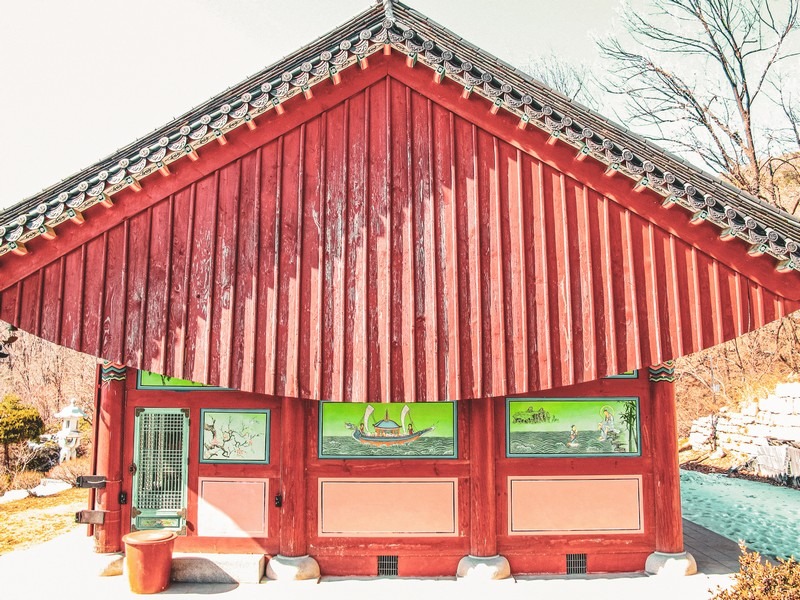
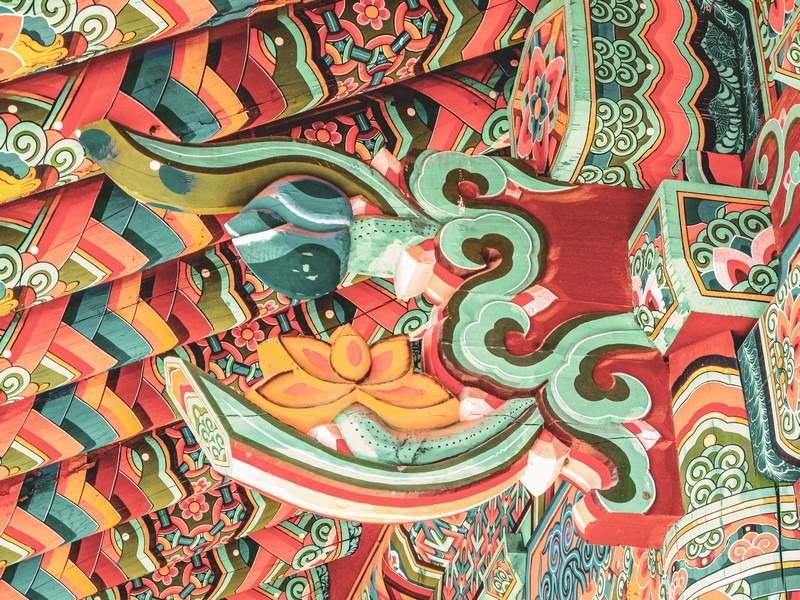
The Taego Order is the second largest order of monks in Korean Buddhism and a traditional seon, or zen, school of Buddhism. Taego is unique in that it allows ordained priests to marry, though nuns must still remain celibate. This order also includes traditional bhikkhu, who tend to live in mountain temples separated from society while the married monks are more like parish priests.
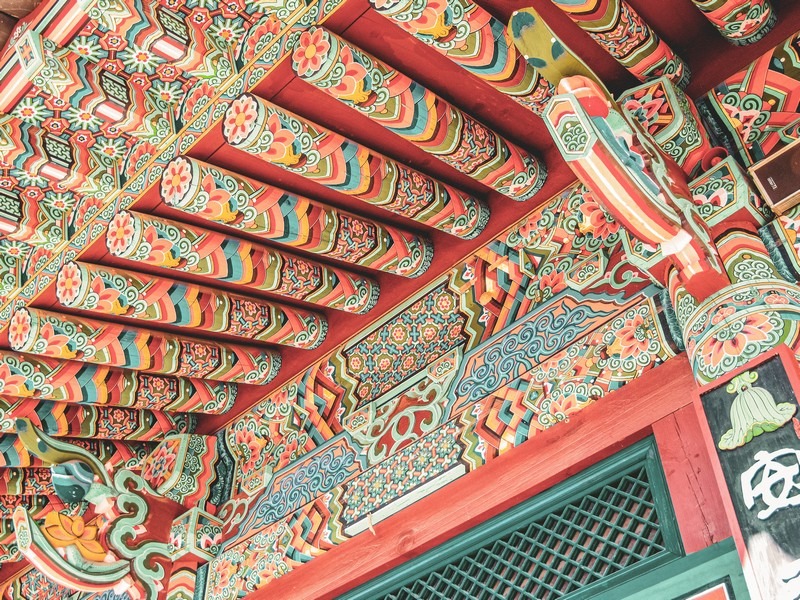
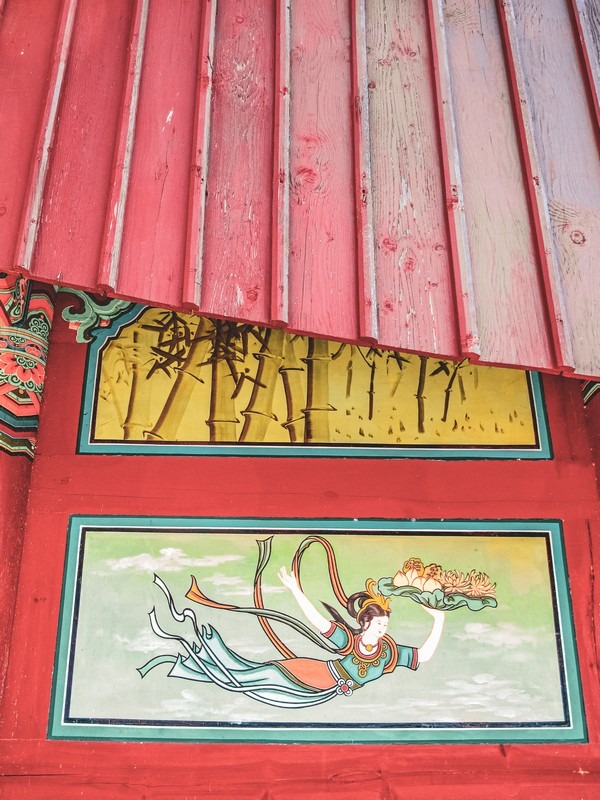
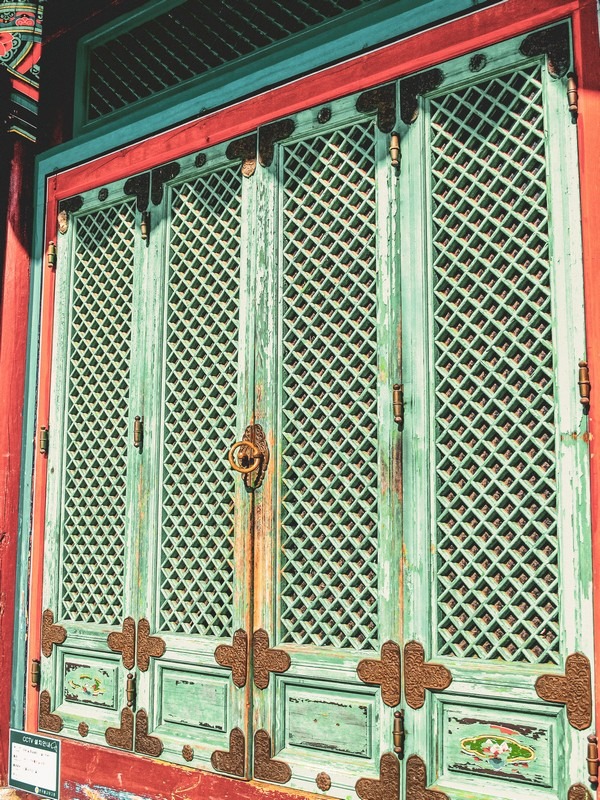
Before 1945 the majority of Korean Buddhist monks were descended from Master Taego Bowu, especially within the Jogye Order founded at the end of the Koryeo Dynasty. In 1954 President Lee Seoung Man along with a number of celibate monks decided there should be two separate orders, one that allowed marriage and one that did not. After the separation, the celibate majority suppressed the new group by forcing those married monks out of the temples. This group formed what is now the Taego Order.

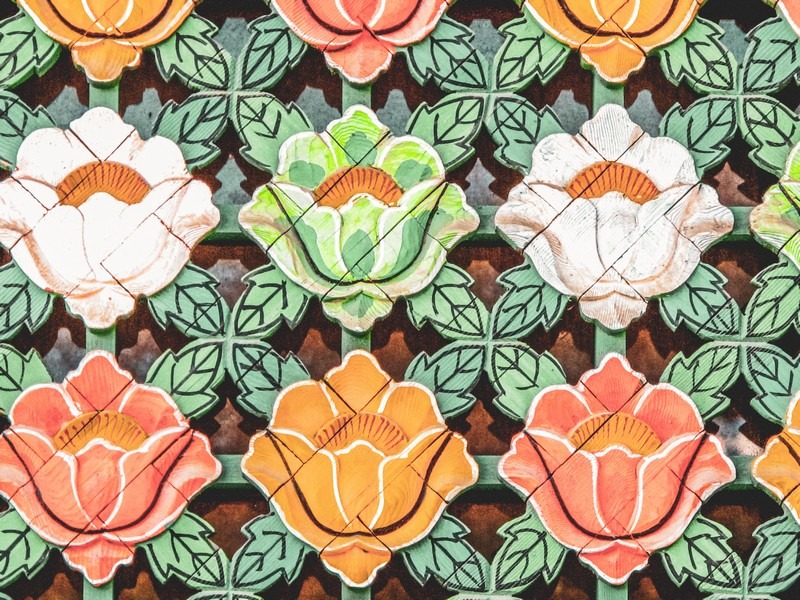
In reading through information about the training of the Jogye Order monks and the Taego Order monks, I found it interesting that though they have a very similar path, the Taego Order holds training in ritual and traditional arts, such as ritual dance and music, in high regard whereas the Jogye order has not kept this tradition alive.
In this regard, every year on June 6, the monks at Bongwonsa perform Yeongsanjae, a Buddhist ritual and Important Intangible Cultural Property No. 50. This ritual is a symbolic reenactment of Buddha Sakyamuni’s delivery of the Lotus Sutra on Mt. Grdhrakuta 2,600 years ago. This ceremony is done to pray for the unity of the living and the deceased, for world peace and national reunification. Two of the fifty monks that now reside on the grounds are in fact “Living National Treasures” because of their mastery of Buddhist chant and temple ornamentation.
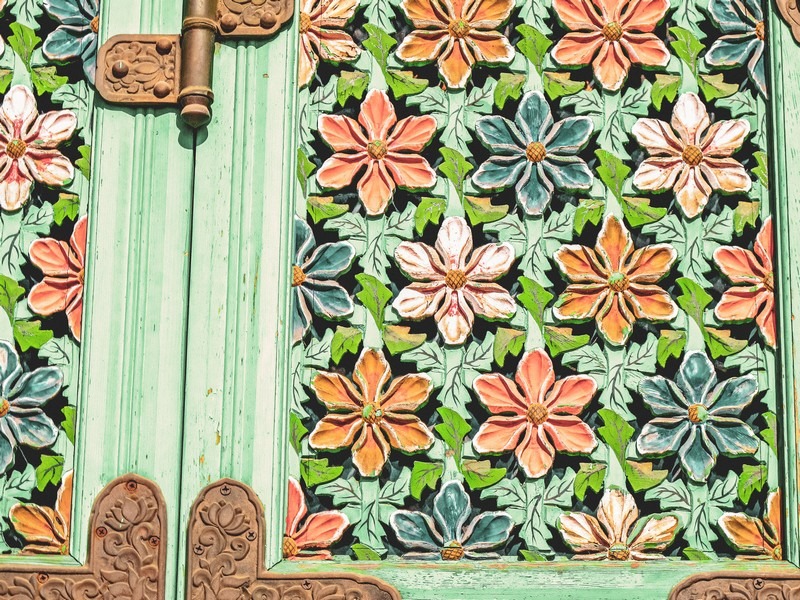
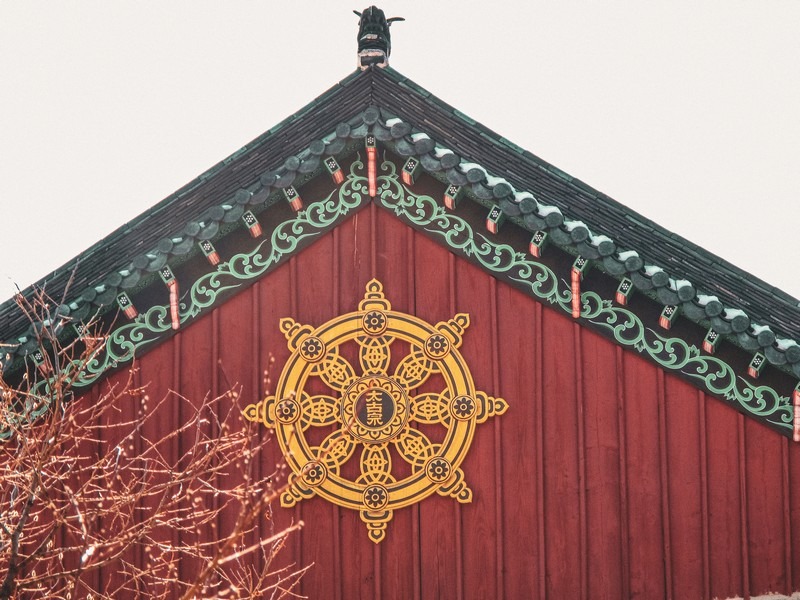
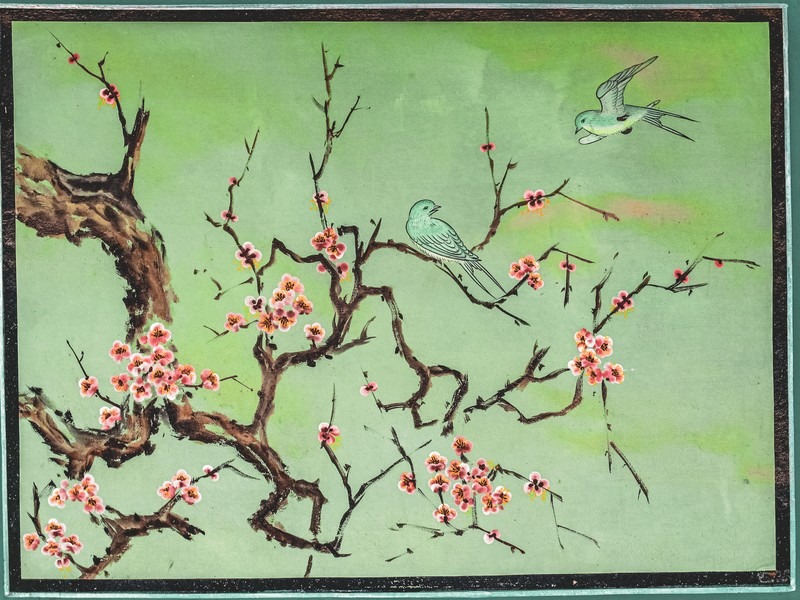

What To See
The Bongwonsa Temple complex holds about thirteen buildings. The first building on the left after entering is The 3000 Buddhas Hall and is by far the most impressive in size. It stands about three stories high and it is interesting to note that no nails were used on the building during the original construction or the restoration in 1991. It is the largest wooden building in Korea.
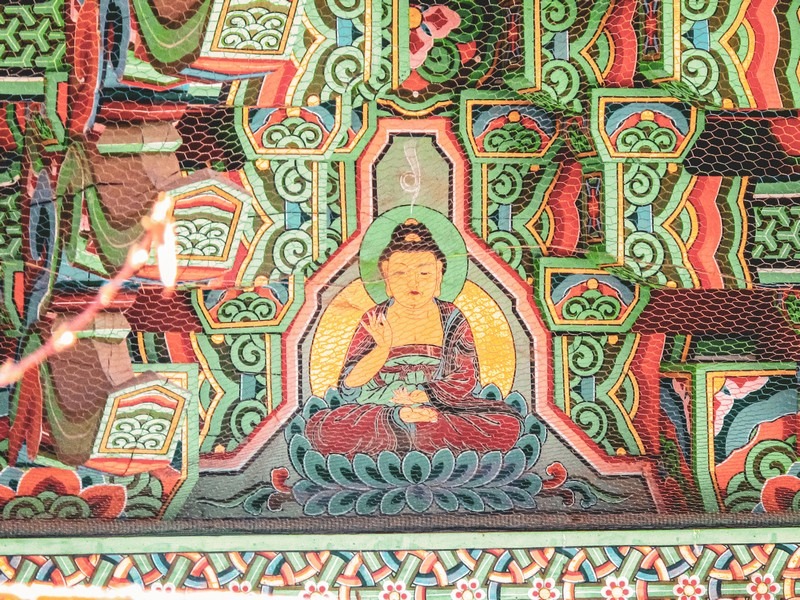
Bongwonsa is a great temple to visit in Seoul and is one of the easier to access. Most Buddhist temple in Korea are located up in the mountains so when there’s one to visit like this, take the opportunity. If you’re interested in getting out to see more Korean temples, check out this list of Stunning Temples That You Shouldn’t Miss in Korea. And for something really unique, don’t miss a stop at the only golden temple in Seoul, Suguksa Temple. It’s just gorgeous… as they all are really.
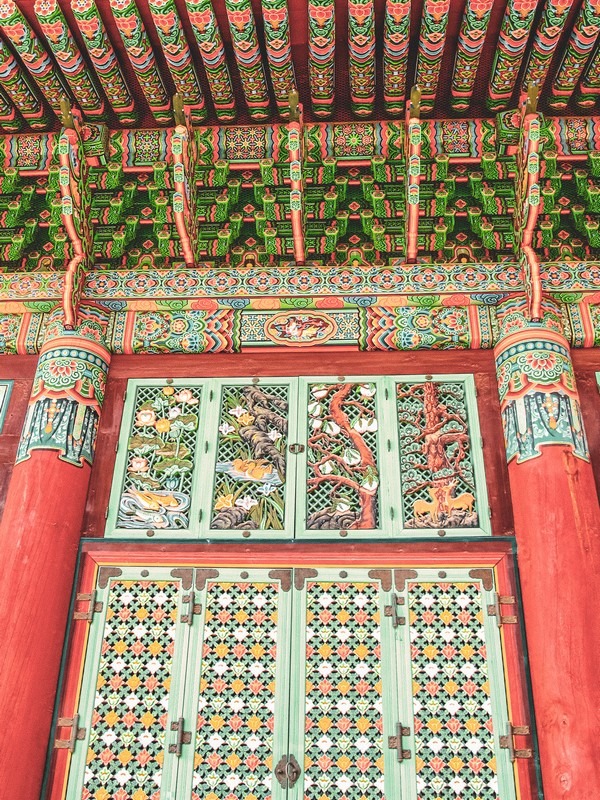
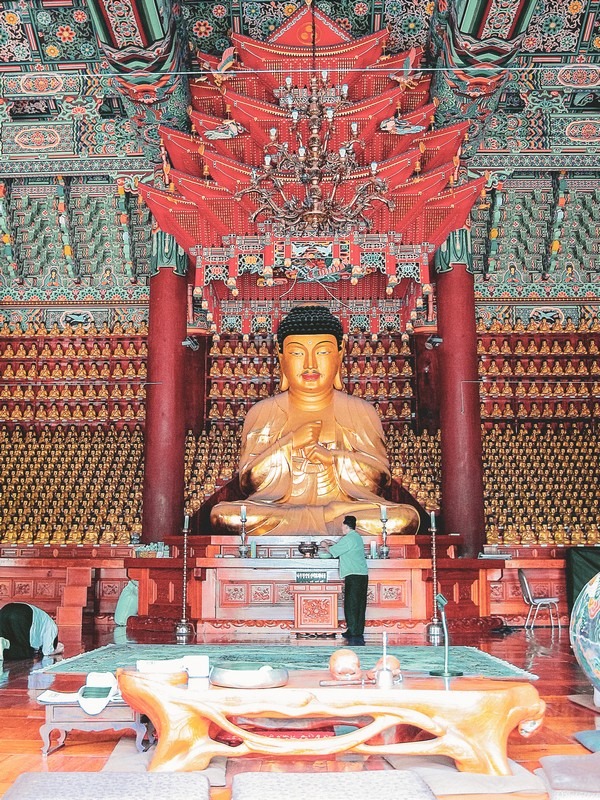
Entering from the front steps there are 16 statues of Arahats worth a visit as well. They have rather creepy contorted faces but they represent someone who has found enlightenment. Some of the buildings, like the 3000 Buddhas Hall have been lovingly painted and are very colorful and look almost new, but some of the buildings still hold that old worn out wonder. They haven’t been repainted in some time, which makes their appeal something different. There is also a building of the old worn kind in the back that has painted glass windows where the lattice work usually is. I had never seen that before.
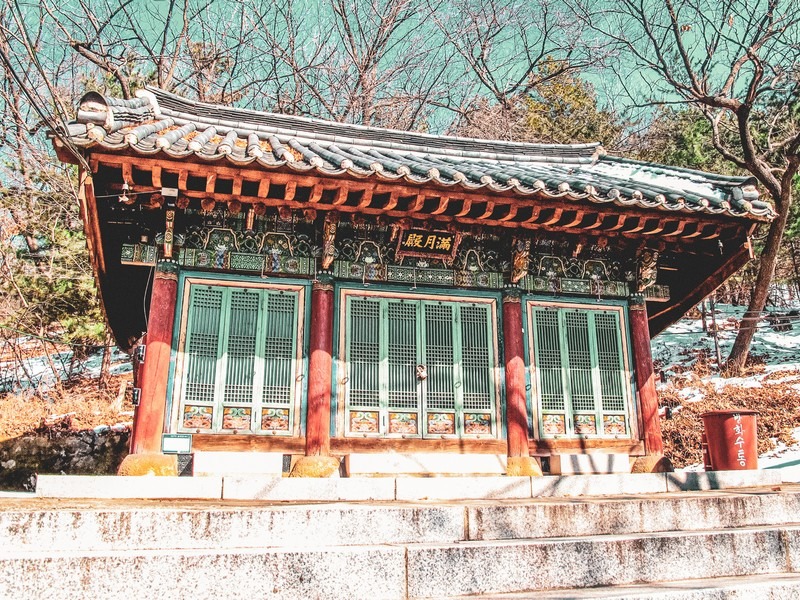
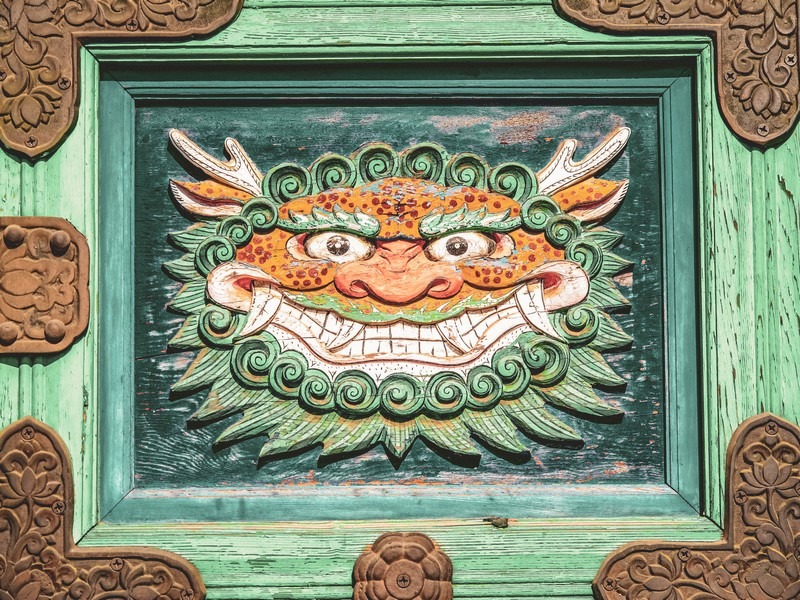
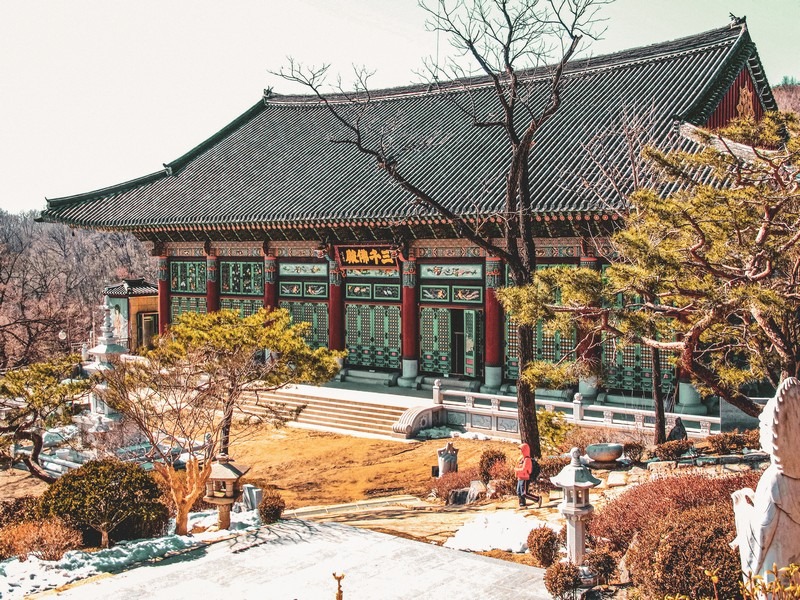
The Yeongsanjae Ritual
Performed for world peace and national reunification, this ceremony is held on June 6, Korea’s Memorial Day, each year. The ceremony has been passed down since the Goryeo Dynasy (917 – 1392CE) and is Korea Important Intangible Cultural Property No. 50. It is a symbolic reenactment of the Buddha of the Buddha Sakyamuni’s delivery of the Lotus Sutra on Mt. Grdhrakuta 2,600 years ago and is held in hopes of leading the living as well as the deceased to the joy of enlightenment and peace.
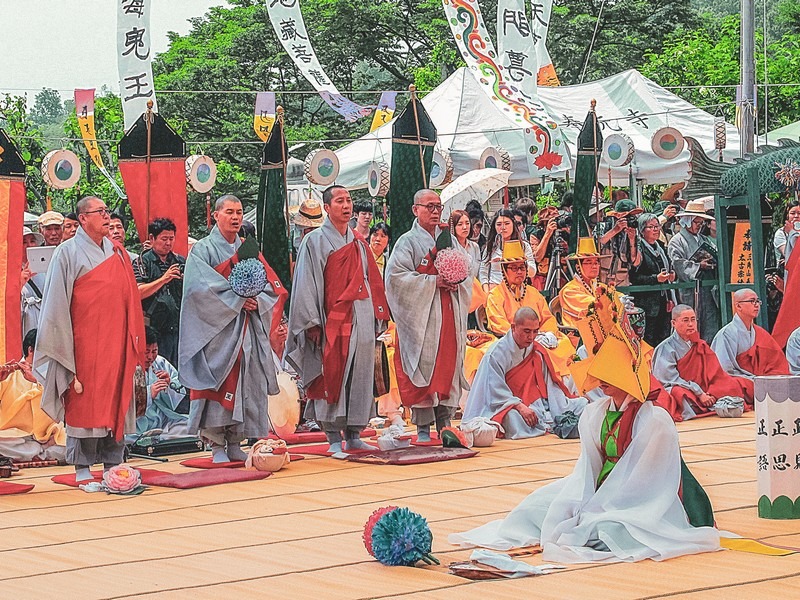
The ceremony starts at 10:00 in the morning and goes until 6:00 in the evening and with a cafeteria on the grounds, it is completely possible to stay the whole day enjoying the sites and soaking in the peaceful atmosphere. The ceremony starts with Tajong, Siryeon. A huge bell is rung to beseech the Buddha, Bodhisattvas, gods, devas, guardians, and other spirits to come down from the heavens. There is a processional led by Bodhisattva Innowang to lead the spirits onto the temple grounds.
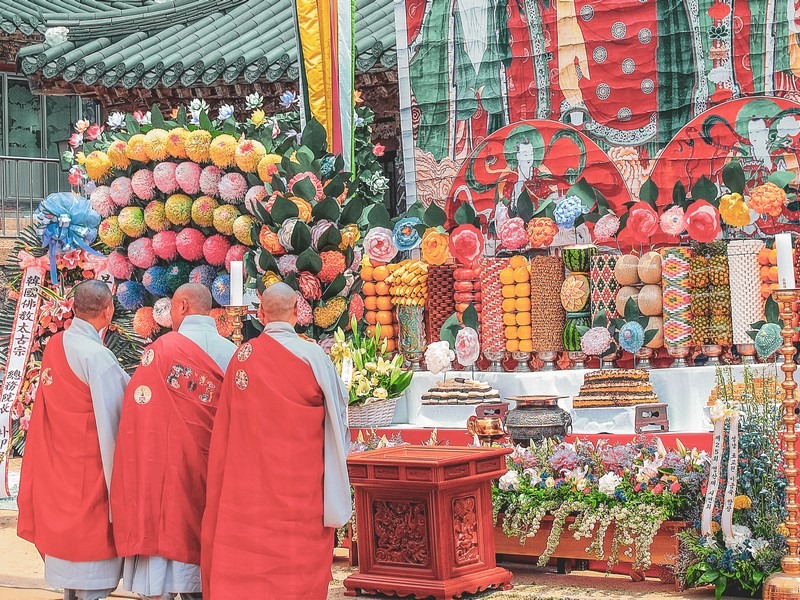
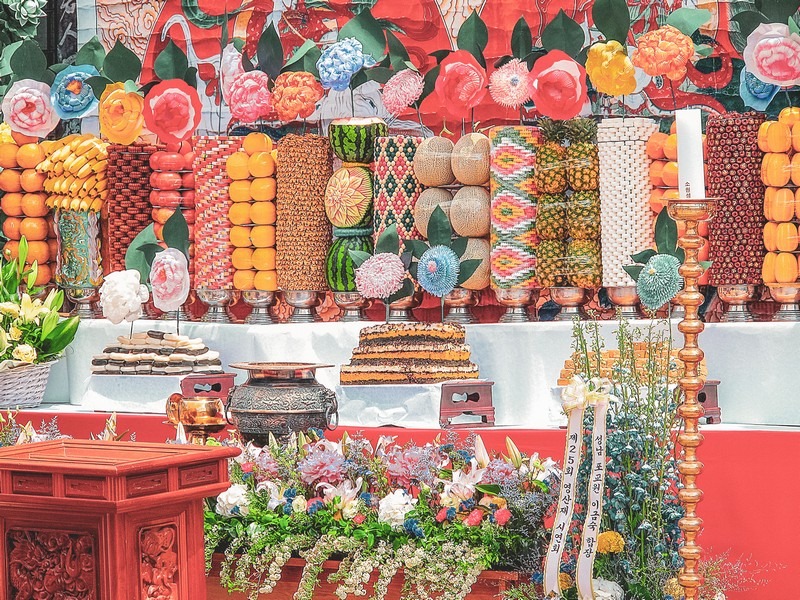
Next is Gwaebul Iun, in which the large Tangka painting with a picture of Budda Sakyamuni is raised. This represents the appearance of the Buddha at the ceremony. Chants to relieve suffering and dances to say thanks are performed.
While this is happening there are alters set with food so that those in attendance can have their ancestors’ names written on paper and hung nearby to be prayed for as well.
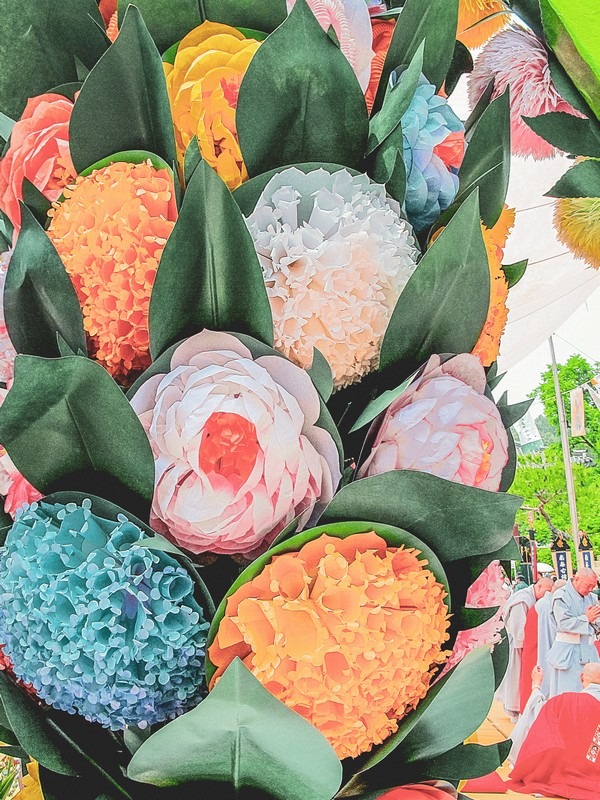
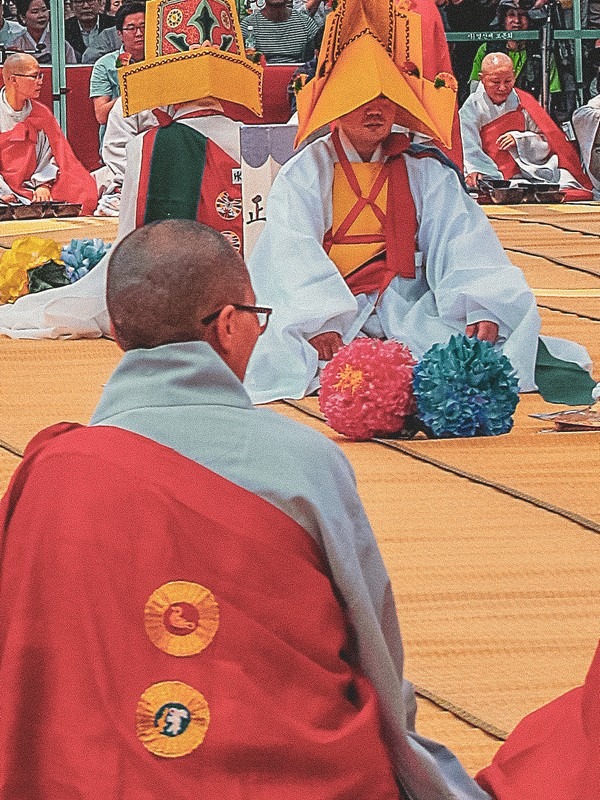
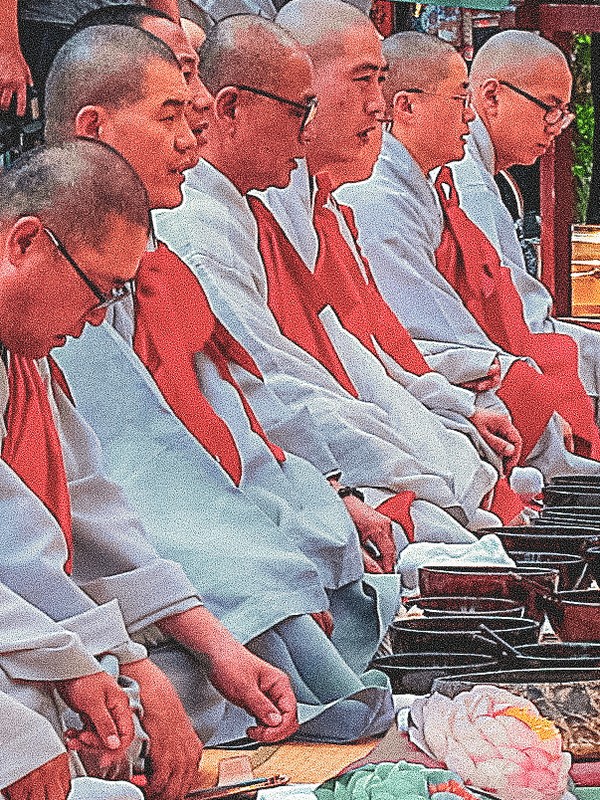
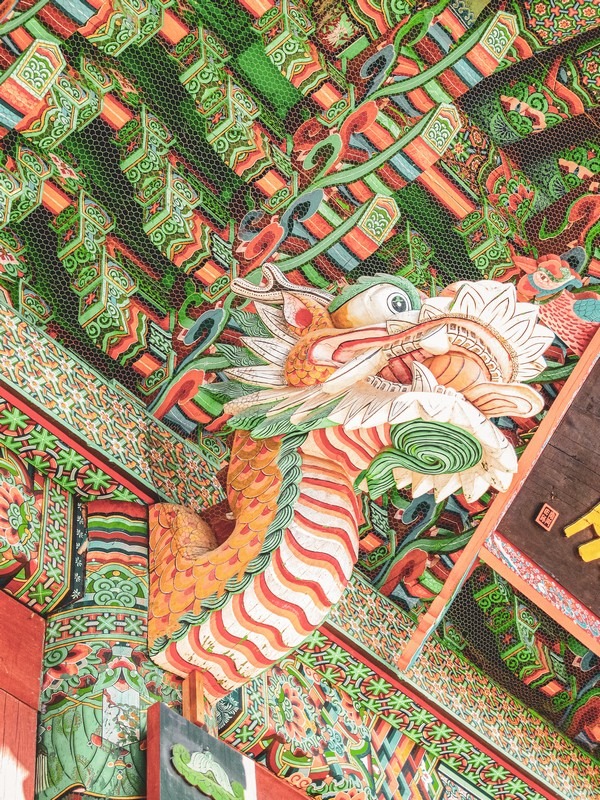
Around noon, the Meal Offering, Sikdang Jakbeop, is performed. The guide I received explains that this is unlike usual meals in that it is accompanied by music and chanting as well as dancing and drumming and is extremely complex. Take note that there are no photographs allowed during this time which makes the crowds dissipate a bit and head to eat their own lunch. Stay and just take it in.
Bongwonsa Temple is worthy of a visit without a ceremony to see, but this ceremony is extremely special and a unique experience if you’re in Seoul in the summer. There isn’t a ton of information online in English regarding this ceremony, but you can find information in Korean on https://pompae.or.kr/
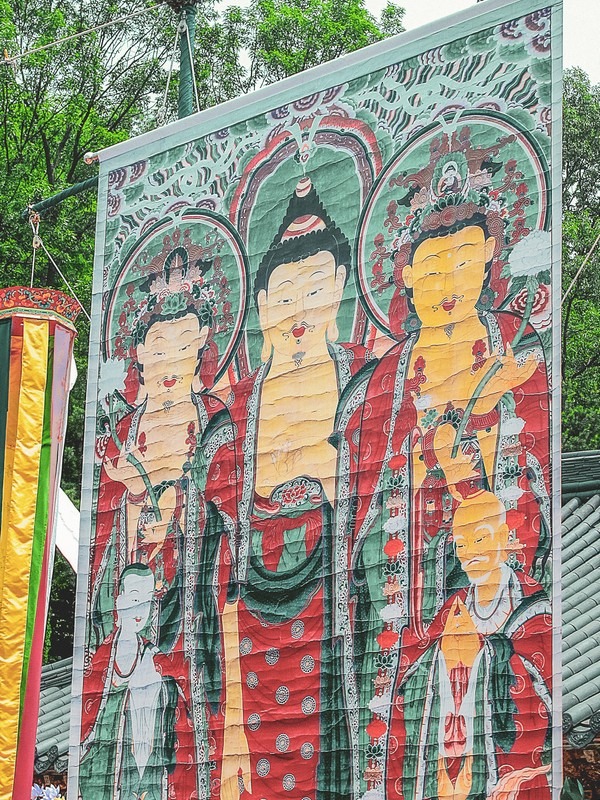
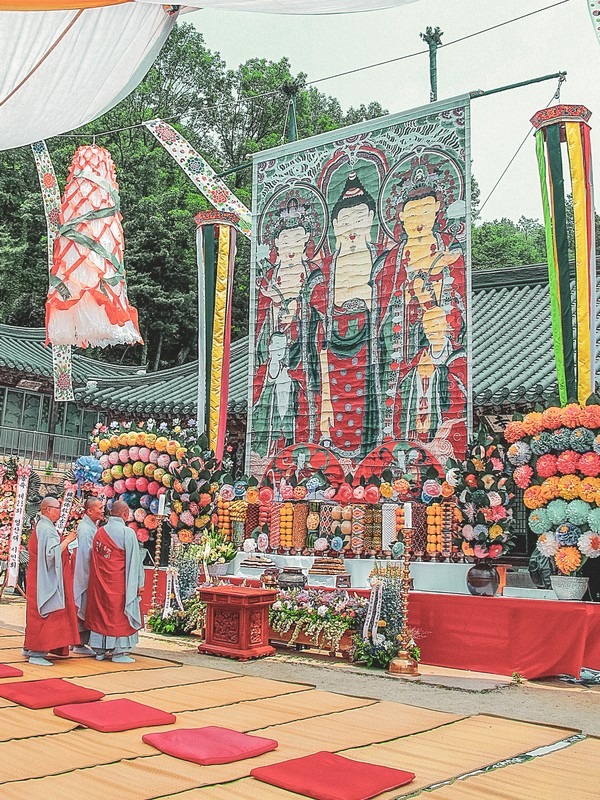
Ansan Mountain features quite a few beautiful, historical, and must see spots here in Seoul. Another one you should check out is the valley of cherry blossom trees that comes down to where a waterfall flows. There are a lot of places to see cherry blossoms in Korea and this is one beautiful one. If you go around another direction, you can visit Seodaemun Prison History Museum. This is eye opening to what happened during the Japanese colonization of Korea and is where everyone should start if they want to learn about the freedom fighters in Korean history.
Did you like this post? Pin It!
